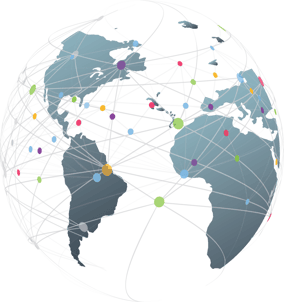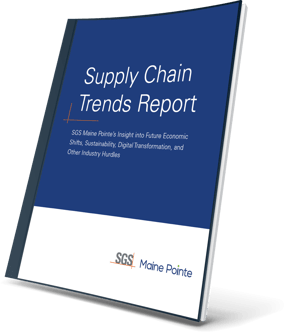Logistics Optimization and Transportation Management
Logistics optimization and transportation management affect the end-to-end supply chain. For example, the key leaders in logistics and transportation must work with:
- Operations to stock the right parts to maintain manufacturing equipment and to ensure they have the right amount of products to prevent excess and shortages
- Procurement because a change in packaging affects shipping costs and the ability to protect products during shipment
- Planning to provide the data needed to decide whether new warehouses are needed and their proximity of warehouses to suppliers and customers.
Logistics optimization and transportation management are also integral to all sustainability initiatives. Changing from trucks to trains can greatly reduce carbon emissions but that might require moving warehouses closer to customers or suppliers; finding suppliers with the right ESG qualifications; and rethinking raw materials and packaging.
With that interconnectivity in mind, what are the current challenges to effective logistics optimization and transportation management? How are those challenges being handled? What role is being played by artificial intelligence (AI)?
How companies are handling logistics and transportation challenges
Labor shortages and supply chain disruptions make it difficult for companies to optimize logistics and manage transportation, and they show no signs of easing up. The American Trucking Association anticipates a shortage of 175,000 truck drivers by 2026. Between natural and man-made disasters, supply chains are fragile at best.
At the same time, customers are demanding faster last-mile delivery and embracing e-commerce. In addition, ever-changing regulations—from carbon emissions standards to customs and tariffs—make logistics and transportation decisions more complex and more expensive.
To keep manage some of these challenges, companies are turning to:
- Supplier optionality
- Ally-sourcing
- Electric or alternative-fuel vehicles
- Route optimization for both fuel efficiency and faster service
- Eco-friendly packaging
- Micro-fulfillment centers
- Autonomous delivery vehicles
- Partnerships with 3PL suppliers and local delivery services
- Drop-shipping (using another company to fill orders instead of maintaining a warehouse)
- Alternative transportation modes, such as intermodal transportation where, for example, rail and truck are combined.
Many of these solutions rely on artificial intelligence (AI) and modeling. However, as the transportation systems become more digitized and connected, the risk of cybersecurity threats increases. Thus, companies also need to make decisions about protecting their transportation networks and sensitive data from cyberattacks.
How AI and computer modeling are changing logistics optimization and transportation management
To streamline logistics, reduce costs, enhance efficiency, and make better decisions, companies use AI and computer modeling. AI sensors and IoT provide real-time data; for example, by monitoring the position of a company’s trucks in real time, AI enables quick responses to changing conditions, such as bad weather or on-road accidents.
AI models allow planners to test out decisions before real world implementation; make predictions that lead to more efficient and effective logistics operations; and develop contingency plans. These models can handle multiple conflicting objectives simultaneously, such as minimizing costs while maximizing customer satisfaction or minimizing delivery times.
Together, AI sensors, IoT, and modeling contribute to:
- Route Optimization, including traffic conditions, delivery constraints, weather, and vehicle capacities
- Warehouse Management, including layouts, storage allocation, and picking routes.
- Process Automation, including sorting, packing, and labeling, to improve efficiency and reduce human errors
- Fleet Management, including monitoring vehicle performance, maintenance needs, downtime, and efficiency
- Risk Management, including assessing the risks of different transportation routes, suppliers, or external factors that could leave to disruptions
- Scheduling, considering constraints like driver availability, delivery windows, and vehicle capacities
- Last-Mile Delivery, including determining the most efficient routes and delivery sequences
- Pattern Recognition, identifying patterns in data that might not be immediately apparent to human analysts and that offer opportunities for adding value.
Related Resources
Ready to improve your consumer demand forecasting?

Talk to us
From rapid sprints for short-term gains to transformation for competitive advantage we are here to get you there.
Schedule a discussion
Submit this form to speak to an SGS Maine Pointe representative.
Prefer a call? (781) 934 - 5569




